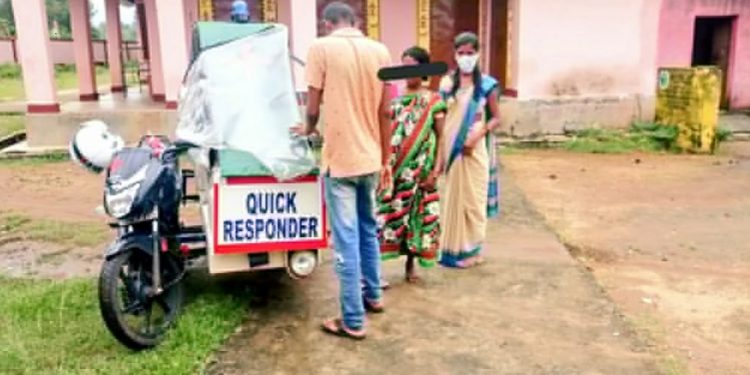Keonjhar: Even though ambulance services are out of reach of people living in many far-flung villages, bike ambulance services are doing a great job in some other remote areas of the mineral-rich and tribal-dominated Keonjhar district, a report said.
It is often seen that reaching hospitals for people in these areas separated by forests with no access roads has been a difficult proposition. Bike ambulances have filled the access gap, enabling patients and expectant mothers to get emergency medical care.
Bike ambulances have helped scores of pregnant patients to access emergency medical care while four-wheeled ambulances are of no help to them.
“On the rugged and rough roads, bike ambulances manage to reach home of emergency patients and taken them to hospitals where safe delivery of women is conducted,” said Dharitiri Rout, secretary of the OSCA.
The district administration had launched this bike ambulance service in Keonjhar in February. These ambulances have been pressed into services with funds provided from OMBDAC and Sampurna scheme.
By October 14 this year, the bike ambulances have managed to provide needful services to nearly 400 pregnant women.
Significantly, bike ambulances have played a key role for pregnant women to avail institutional delivery in remote rural pockets where home and traditional delivery has still been in vogue.
These bike ambulances have been stationed at primary health centres located at Bolani, Kalimati, Malda, Rebanapalaspala, Kaliahota and Kanjipani.
This service has been jointly rendered with the help of health workers and social organizations, it is learnt.
However, social activists observed that facilities like effective ambulance services are crucial. Ambulances do not represent just a transportation facility for patients but are lifesaving units. Such bike ambulance services are badly needed in remote and inaccessible areas under Bansapal, Telkoi, Harichandanpur, Joda and Jhumpura blocks.
Another advantage of this service is comparatively cheaper than four-wheeler ambulance services. A lot can be done to improve physical access to health, especially in an emergency, they pointed out.
PNN






































